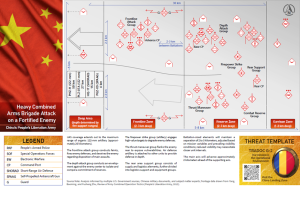Russia’s Adapted Combat Medical Procedures Yielding Enhanced Survival Rates
By Colin Christopher
Requires CAC to access
File Size:
1.21MB
File Type:
Page Count:
8
Share & Get The Message Out
This analysis examines the initial inadequacies of Russian medical support during the opening stages of the war in Ukraine, which contributed to higher casualty rates and diminished combat effectiveness. Early failures stemmed from insufficient resources, bureaucratic issues, underestimation of Ukrainian resistance, and a lack of recent combat medical experience.
Key Findings:
• Initial Inadequacies: Russia’s military health system was unprepared for the scale of casualties in Ukraine, despite prior modernization efforts. A mismatch existed between projected and actual casualty levels and available medical resources.
• Tactical Shortcomings: Tactical combat medical operations were overburdened, with a vulnerable and inflexible casualty evacuation system. Delays in reaching surgical teams led to high mortality rates.
• Equipment and Training Deficiencies: Soldiers lacked adequate first-aid training and were issued rudimentary, often expired, Individual First Aid Kits.
• Recent Improvements: Since 2024, Russia’s Ministry of Defense has adapted tactics, techniques, and procedures to improve combat medical support.
• Lessons for the United States and Allies: The Russian experience highlights the importance of decentralized, resilient medical capabilities, robust training, and accurate casualty rate projections for effective large-scale combat operations.
This assessment emphasizes the critical need to prioritize sustained medical support alongside speed of advance and to avoid underestimating the demands of modern warfare.
Related Products
FY 2025 Operational Environment Running Estimate
How Russia Fights in Large-Scale Combat Operations
Exploiter Series: Sociocultural Exploitation of Bangladesh
Differences in Russian Military Planning Underscore Importance of “Thinking Red”
China’s People’s Liberation Army Heavy Infantry Company Attack on a Fortified Enemy Threat Template
North Korea’s Ukraine War Involvement Signals Escalating Cooperation Among U.S. Adversaries
China’s People’s Liberation Army Heavy Combined Arms Brigade Attack on a Fortified Enemy Threat













